VMware and PCI DSS Compliance: Taking the right steps in a virtualized environment
As of vSphere 6.5, AES encryption has been added to VMware. With VMWare encryption, complying with PCI DSS, requirement 3 is even easier. And executives are taking note as they look to conserve resources by moving their organizations databases and IT environments to virtualized platforms and to the cloud.
Security best practices and compliance regulations call for sensitive data to be protected with encryption and that data-encrypting keys (DEK) be physically or logically separated from the sensitive data and protected with strong key-encrypting keys (KEK). Depending on what type of information is being stored and what industry guidance your project/company falls under, compliance regulations in addition to PCI DSS may apply.
 The Payment Card Industry Data Security Standard (PCI DSS) is one of the most rigorous and specific set of standards established to date and is used by many organizations as a standard to secure their systems. PCI DSS applies to all organizations that store, process, or transmit cardholder data, regardless of volume. This includes merchants, service providers, payment gateways, data centers, and outsourced service providers.
The Payment Card Industry Data Security Standard (PCI DSS) is one of the most rigorous and specific set of standards established to date and is used by many organizations as a standard to secure their systems. PCI DSS applies to all organizations that store, process, or transmit cardholder data, regardless of volume. This includes merchants, service providers, payment gateways, data centers, and outsourced service providers.
Here is a high level look at all twelve items that must be met in order to be compliant, with three new requirements in PCI DSS 3.0 (**) that warrant mentioning as being most relevant to the use of VMware and cloud technologies in a PCI-regulated infrastructure:
Build and Maintain a Secure Network and Systems
Requirement 1: Install and maintain a firewall configuration to protect cardholder data
(3.0) **Req. 1.1.3: "[Maintain a] current diagram that shows all cardholder data flows across systems and networks."
Requirement 2: Do Not use vendor-supplied defaults for system passwords and other security parameters
(3.0)** Req. 2.4: "Maintain an inventory of system components that are in scope for PCI DSS."
Protect Cardholder Data
Requirement 3: Protect stored cardholder data*
* Requirement 3 specifically addresses the need for encryption and key management, stating:
“Protection methods such as encryption, truncation, masking, and hashing are critical components of cardholder data protection. If an intruder circumvents other security controls and gains access to encrypted data, without the proper cryptographic keys, the data is unreadable and unusable to that person. Other effective methods of protecting stored data should also be considered as potential risk mitigation opportunities. For example, methods for minimizing risk include not storing cardholder data unless absolutely necessary, truncating cardholder data if full PAN is not needed, and not sending unprotected PANs using end-user messaging technologies, such as e-mail and instant messaging.”
Requirement 4: Encrypt transmission of cardholder data across open, public networks
Maintain a Vulnerability Management Program
Requirement 5: Protect all systems against malware and regularly update anti-virus software or programs
Requirement 6: Develop and maintain secure systems and applications
Implement Strong Access Control Measures
Requirement 7: Restrict access to cardholder data by business need-to-know
Requirement 8: Identify and authenticate access to system components
Requirement 9: Restrict physical access to cardholder data
Regularly Monitor and Test Networks
Requirement 10: Track and monitor all access to network resources and cardholder data
Requirement 11: Regularly test security systems and processes
Maintain an Information Security Policy
Requirement 12: Maintain a policy that address information security for all personnel
(3.0) ** Req. 12.8.5: "Maintain information about which PCI DSS requirements are managed by each service provider and which are managed by the entity."
It can seem overwhelming at first, but the PCI Security Standards Council (PCI SSC) website contains this documentation along with a number of additional resources to assist organizations with their PCI DSS assessments and validations. Within the latest documentation by the PCI Security Standards Council (v3.0 released November 2013) specific testing procedures and guidance is given for Requirement 3 on pages 34-43.
Fortunately, there are also standards and published guidance on running payment applications in a virtualized environment:
Payment Card Industry Data Security Standard: Virtualization Guidelines and Cloud Computing Guidelines
NIST SP 800-144: Guidelines on Security and Privacy in Cloud Computing
Cloud Security Alliance: Security Guidance for Critical Areas of Focus in Cloud Computing
While virtual technology is not limited to VMware, it is one of the most commonly used and supported architectures by many cloud service providers. In addition to the PCI compliance and cloud guidelines above, VMware worked with CoalFire, a QSA auditing firm, to create guidance on how to specifically deploy payment applications in a VMware environment. You can access the CoalFire document here.
As platform virtualization becomes a more popular solution, executives need to remain vigilant with their data security and meeting compliance requirements. We can help make the transition to VMware easy with our Alliance Key Manager for VMware solution, which meets the PCI recommendations when deployed properly in a VMware environment. We are committed to helping businesses protect sensitive data with industry standard NIST compliant AES encryption and FIPS 140-2 compliant encryption key management solutions.
To learn more about enterprise key management for VMware and vCloud, download our podcast "Virtualized Encryption Key Management".

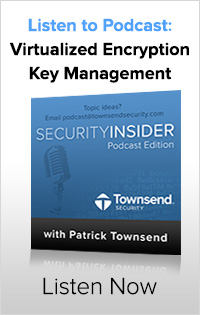


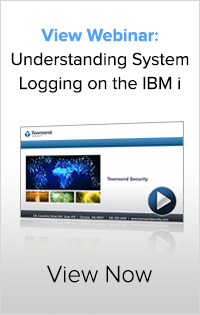

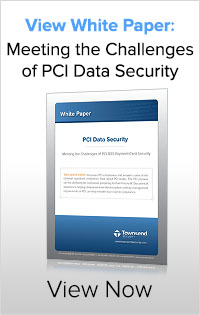



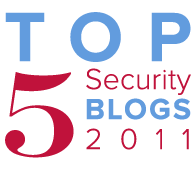 At Townsend, we have a lot of conversations with customers and prospects about data privacy, compliance requirements and best practices for IT security in general. We have written numerous articles on these topics and posted them on our blog. As the end of 2011 quickly approaches, we thought it would be worthwhile to list out our most read articles of the year.
At Townsend, we have a lot of conversations with customers and prospects about data privacy, compliance requirements and best practices for IT security in general. We have written numerous articles on these topics and posted them on our blog. As the end of 2011 quickly approaches, we thought it would be worthwhile to list out our most read articles of the year.  Lately we are seeing an increase in questions around PCI requirements for
Lately we are seeing an increase in questions around PCI requirements for 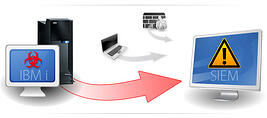 As “The Encryption Company,” we often blog about meeting PCI DSS with encryption and key management. Our NIST-certified technologies will help your organization satisfy Section 3 of PCI DSS, as well as other privacy regulations. But there is another section of PCI DSS that Townsend Security can help you with – Section 10.
As “The Encryption Company,” we often blog about meeting PCI DSS with encryption and key management. Our NIST-certified technologies will help your organization satisfy Section 3 of PCI DSS, as well as other privacy regulations. But there is another section of PCI DSS that Townsend Security can help you with – Section 10.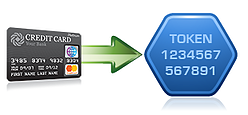 The generation of tokens is an important part of the new PCI SSC guidance on tokenization. Tokens can be generated using a number of techniques including random number generation, encryption, sequential assignment, and indexes. Using tokens to recover the original credit card number must be “computationally infeasible” according to the new guidance.
The generation of tokens is an important part of the new PCI SSC guidance on tokenization. Tokens can be generated using a number of techniques including random number generation, encryption, sequential assignment, and indexes. Using tokens to recover the original credit card number must be “computationally infeasible” according to the new guidance.